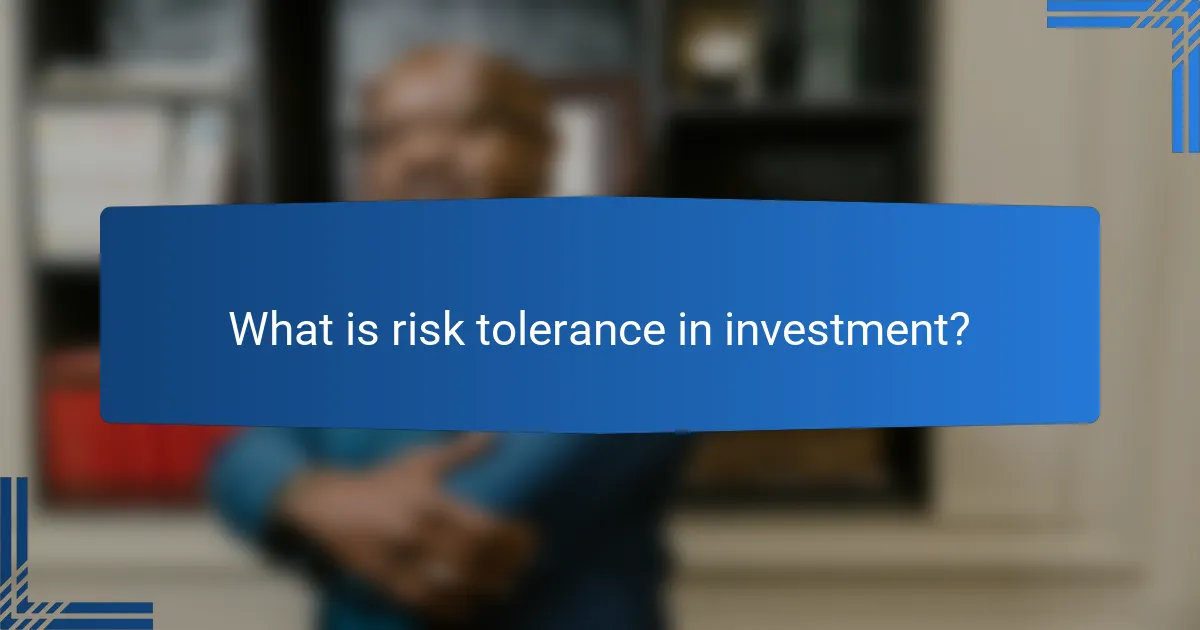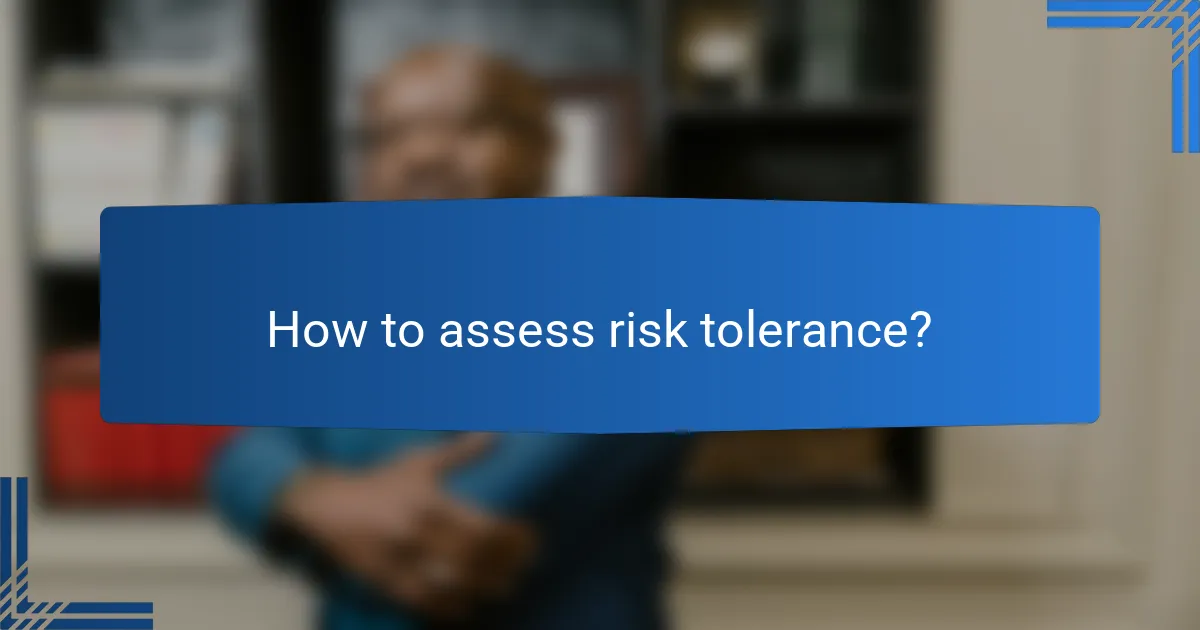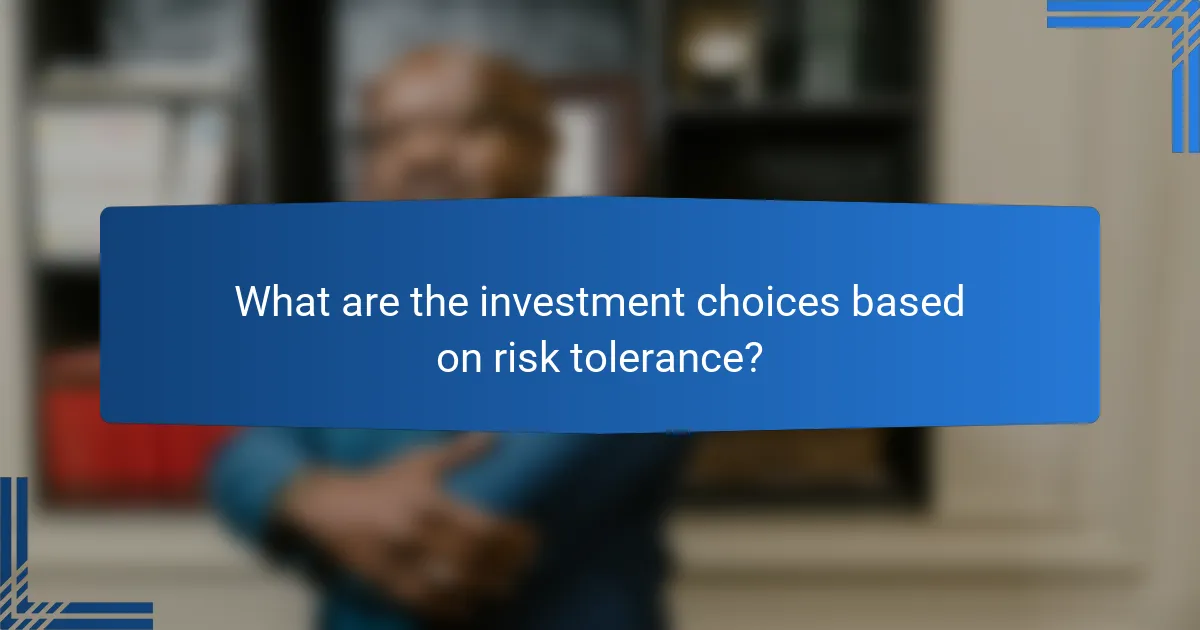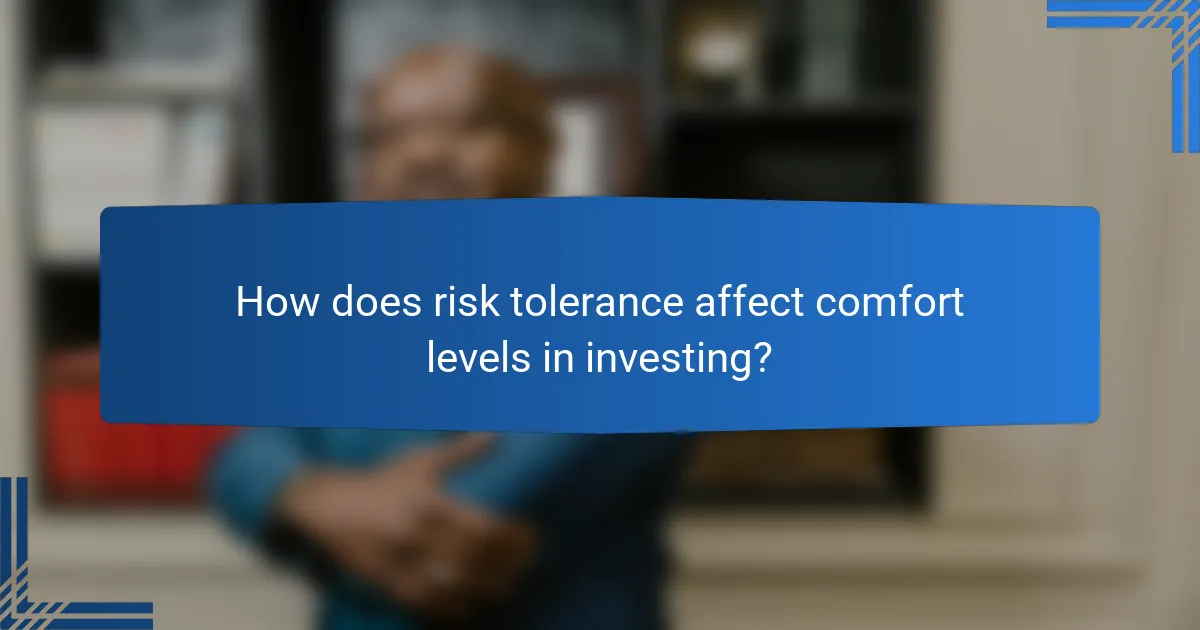Understanding risk tolerance is essential for making informed investment decisions, as it reflects an individual’s ability and willingness to withstand fluctuations in investment values. By assessing your risk tolerance, you can align your investment choices with your financial goals and comfort levels, whether you prefer conservative or aggressive strategies. This alignment helps ensure that your portfolio is tailored to your unique preferences regarding potential losses and market volatility.

What is risk tolerance in investment?
Risk tolerance in investment refers to an individual’s ability and willingness to endure fluctuations in the value of their investments. It is a crucial factor that influences investment decisions and portfolio choices, helping investors align their strategies with their comfort levels regarding potential losses.
Definition of risk tolerance
Risk tolerance is defined as the degree of variability in investment returns that an individual is willing to withstand. This concept encompasses both emotional and financial aspects, meaning that it reflects not only how much risk one can afford to take but also how much risk one is psychologically comfortable with.
Investors typically categorize their risk tolerance as low, moderate, or high. A low risk tolerance indicates a preference for safer investments, while a high risk tolerance suggests a willingness to engage in more volatile assets for potentially greater returns.
Importance in investment strategy
Understanding risk tolerance is vital for developing an effective investment strategy. It helps investors select appropriate asset allocations, balancing between stocks, bonds, and other investment vehicles based on their comfort with risk. For instance, a conservative investor may prefer a portfolio heavily weighted in bonds, while an aggressive investor might favor stocks and alternative investments.
Moreover, aligning investments with risk tolerance can prevent emotional decision-making during market downturns. Investors who understand their risk tolerance are less likely to panic and sell off assets at a loss, allowing them to stay focused on long-term goals.

How to assess risk tolerance?
Assessing risk tolerance involves understanding your willingness and ability to endure fluctuations in investment values. It helps in making informed decisions about investment choices that align with your financial goals and comfort levels.
Self-assessment questionnaires
Self-assessment questionnaires are tools designed to gauge your risk tolerance by asking a series of questions about your financial situation, investment experience, and emotional responses to market changes. These questionnaires typically cover aspects such as your investment goals, time horizon, and how you would react to potential losses.
Many financial institutions offer these questionnaires online, providing immediate feedback on your risk profile. For example, you might find that you are categorized as conservative, moderate, or aggressive based on your responses, which can guide your investment strategy.
Consulting financial advisors
Consulting financial advisors can provide a personalized assessment of your risk tolerance. Advisors often use a combination of questionnaires and in-depth discussions to understand your financial situation and objectives, leading to tailored investment recommendations.
When working with an advisor, be prepared to discuss your financial goals, current assets, and any past investment experiences. This dialogue can help clarify your comfort levels with risk and ensure that your investment choices align with your overall financial strategy.

What are the investment choices based on risk tolerance?
Investment choices vary significantly based on an individual’s risk tolerance, which reflects their comfort level with potential losses and volatility. Generally, these choices can be categorized into conservative and aggressive options, each suited to different investor profiles.
Conservative investment options
Conservative investment options are designed for individuals who prioritize capital preservation over high returns. These typically include fixed-income securities such as government bonds, high-grade corporate bonds, and money market funds. Investors can expect lower volatility and more stable returns, making these choices suitable for those with a low risk tolerance.
Common conservative investments may yield returns in the low single digits, but they offer a safer harbor during market downturns. It is advisable to allocate a significant portion of a conservative portfolio to these assets, especially for those nearing retirement or with short-term financial goals.
Aggressive investment options
Aggressive investment options appeal to those who are willing to accept higher risks for the potential of greater returns. These include stocks, real estate, and commodities, which can experience significant price fluctuations. Investors with a high risk tolerance may focus on growth stocks or sector-specific funds that target emerging markets or technology.
While aggressive investments can yield returns in the double digits, they come with increased volatility and the possibility of substantial losses. Investors should regularly review their portfolios and consider diversifying across various asset classes to mitigate risks while pursuing higher returns.

How does risk tolerance affect comfort levels in investing?
Risk tolerance significantly influences comfort levels in investing by determining how much volatility an investor can handle without feeling anxious. Understanding one’s risk tolerance helps in selecting investments that align with personal comfort, ultimately leading to better decision-making and satisfaction.
Understanding emotional responses
Emotional responses to market fluctuations can vary widely among investors. Those with high risk tolerance may feel excited during market volatility, viewing it as an opportunity, while those with low risk tolerance might experience anxiety and stress. Recognizing these emotional triggers is crucial for managing investment choices effectively.
Investors should assess their emotional reactions to past market events to gauge their risk tolerance. Keeping a journal of feelings during market highs and lows can provide insights into personal comfort levels and help in making informed investment decisions.
Long-term vs short-term comfort
Long-term investors often have a higher risk tolerance because they can ride out market fluctuations over time. This perspective allows them to focus on potential growth rather than short-term losses. In contrast, short-term investors may require a lower risk tolerance to avoid the stress of daily market changes.
To balance comfort levels with investment strategies, consider your investment horizon. If you plan to invest for several years, you might opt for riskier assets like stocks. However, if your investment timeline is shorter, safer options like bonds or cash equivalents may be more suitable.

What frameworks can help in determining risk tolerance?
Several frameworks can effectively help individuals assess their risk tolerance, guiding them in making informed investment choices. These frameworks typically involve structured models and matrices that evaluate personal comfort levels with risk and potential returns.
Risk assessment models
Risk assessment models are tools designed to evaluate an individual’s willingness and ability to take on investment risk. Common models include questionnaires that gauge factors such as financial situation, investment goals, and emotional responses to market fluctuations. For instance, a typical model may categorize investors as conservative, moderate, or aggressive based on their answers.
When using a risk assessment model, consider your time horizon, financial obligations, and how you react to losses. A conservative investor might prefer stable investments like bonds, while an aggressive investor may lean towards stocks or alternative assets. Always remember that personal circumstances can shift, so reassessing your risk tolerance periodically is advisable.
Investment strategy matrices
Investment strategy matrices provide a visual representation of various investment options based on risk and return profiles. These matrices help investors align their portfolios with their risk tolerance by categorizing assets into different quadrants, such as low-risk/low-return and high-risk/high-return. This allows for a clearer understanding of potential trade-offs.
To effectively use an investment strategy matrix, identify where your current investments lie and compare them to your risk tolerance. For example, if you find yourself in the high-risk quadrant but prefer a conservative approach, consider reallocating funds into lower-risk assets. Regularly updating your matrix can help maintain alignment with your evolving risk comfort levels.

What are common misconceptions about risk tolerance?
Many investors misunderstand risk tolerance, often conflating it with risk capacity or emotional resilience. Recognizing these misconceptions is crucial for making informed investment decisions that align with personal comfort levels and financial goals.
Overestimating risk capacity
Investors frequently overestimate their risk capacity, believing they can handle more volatility than they actually can. This can lead to poor investment choices, such as allocating too much to high-risk assets without considering their financial situation or obligations.
A practical approach is to assess your financial stability, including income, expenses, and savings. If you have a stable income and a solid emergency fund, you may afford to take on more risk, but if your financial situation is uncertain, it’s wise to adopt a more conservative strategy.
Underestimating emotional factors
Emotional factors play a significant role in risk tolerance, yet many investors overlook them. Fear of loss can lead to panic selling during market downturns, while overconfidence can result in reckless investment behavior.
To gauge your emotional response to market fluctuations, consider keeping a journal of your reactions during different market conditions. This can help you identify patterns in your behavior and adjust your investment strategy accordingly. Remember, aligning your investments with your emotional comfort level is just as important as aligning them with your financial goals.

What emerging trends influence risk tolerance in the UK?
Emerging trends such as economic fluctuations, technological advancements, and changing investor demographics significantly influence risk tolerance in the UK. Investors are increasingly adapting their strategies based on these factors, which can affect their comfort levels with various investment choices.
Impact of economic changes
Economic changes, including inflation rates, interest rates, and market volatility, directly impact risk tolerance among UK investors. For instance, during periods of high inflation, investors may become more cautious, preferring safer assets like bonds over stocks.
Additionally, shifts in interest rates can alter investment strategies. When rates rise, fixed-income investments may become more attractive, leading to a decrease in risk tolerance for equities. Investors should regularly assess their portfolios in light of these economic indicators to align their risk levels with current market conditions.
To navigate these changes effectively, consider maintaining a diversified portfolio that balances risk and return. Regularly reviewing your investment strategy in response to economic trends can help ensure that your risk tolerance remains aligned with your financial goals.
